Q&A with Catherine Lepage (‘The Great Malaise’)
Having studied design at Quebec’s Cégep de Sainte-Foy followed by illustration at Strasbourg’s École supérieure des arts décoratifs , Catherine Lepage has since worked in art direction for advertising, ultimately founding her own Montreal-based design studio Ping Pong Ping alongside Simon Rivest. 2019 saw the completion of her first animated short film The Great Malaise, produced by the National Film Board of Canada and drawing upon the themes of mental health and anxiety she has previously explored in her illustrated books 12 mois sans intérêt, Fines tranches d’angoisse (Thin Slices of Anxiety), and Zoothérapie.
Communicated through an array of strikingly-rendered visual metaphors, the film presents a young woman describing herself via narration. Ostensibly confident and self-assured, the increasing fragility and unrest of the juxtaposed visuals tell a different story – of self-doubt, stress and discontent.
Among this year’s Oscar-longlisted short films and having screened at a number of high-profile festivals including Encounters, Berlinale, Tricky Women, Animatou and Vancouver International Film Festival, The Great Malaise has also won awards at Les Sommets du cinéma d’animation, Manchester Animation Festival and Calgary International Film Festival. Skwigly caught up with Catherine to learn more about her first venture into animated short filmmaking.
Your career has spanned, among other things, Art Direction, design, books and film – would you say you come from more of a design or animation background?
My background is in design and illustration. I worked in the commercial sector for years before finding my artistic voice. My experience in advertising agencies has influenced how I create. A similar foundation underlies all my images: a desire to communicate as simply as possible, and to surprise the viewer and unsettle them to grab their attention. My visual world comes out of illustration and my love for printed materials, textures, and physical media. I’m especially fond of illustrations in older books for children, made at a time when reproduction and printing techniques were much more restrictive. Artists back then produced miracles with limited means. So I don’t have a ton of experience with animation, though I’ve always had a desire to make my drawings move, because of the magic that motion confers.
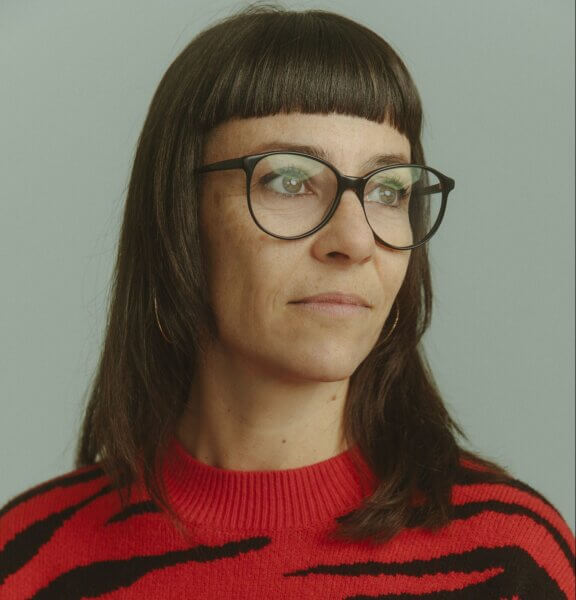
Catherine Lepage (Photo: Kelly Jacob/Image via NFB)
You also write books that often explore mental health, what has compelled you to explore that subject matter, and how has the response to them been?
Throughout my career in advertising, I always wanted to write my own illustrated stories, but felt that I didn’t have a story to tell. After going through a depression, I wanted to transform that painful experience into something beautiful, meaningful, and positive. At first, it was a purely aesthetic exercise and an attempt to use images to explain a state that’s hard to describe with words. It was very well received, and I learned that speaking openly and honestly about mental health was moving to people and could even ease their suffering, even though I wasn’t really offering them a solution. The fear of judgement in “coming out” about my mental health problems in my first book was quickly replaced by a sense of peace; being able to talk about it openly was a weight off my shoulders. Surprisingly, it’s when I’m open and vulnerable that I feel strongest and that I’m helping people.
The Great Malaise boasts a range of visual styles – did you work with multiple artists when it came to the visual development?
No. The aesthetic comes from my books, where I allowed myself the freedom of varying my style to best illustrate each idea. In commercial illustration, you have to maintain a consistent style, and over time, I began to feel trapped in my style. So my books were outlets in which I could explore other directions without any constraints.
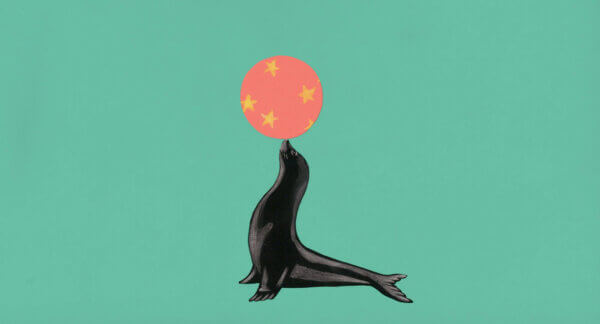
The Great Malaise (©2019 National Film Board of Canada)
There are two books credited as the basis for the film – can you tell us more about them and why you were inclined to expand them into animation?
Actually there are three! The first, published in 2007, attracted the attention of Marcel Jean, a producer who often worked with the NFB back then. He approached me to adapt it for film, but the project didn’t come together for various reasons. In subsequent years, between contracts, I wrote books exploring similar themes—depression, anxiety, malaise—that were always well received, and I could see how important it was to talk about mental health. Things have changed over the years, and the topic has become less taboo. Unfortunately, I’ve also seen an increase in the number of people of all ages suffering from anxiety. So the idea of making an animated film, which had been germinating all along, began to assert itself. From my three illustrated books, I retained what I thought most suitable for animation, but I wrote an entirely new story to bring the disparate images to life and create an independent work.
The sequence in which things start to fall apart and go awry is very well realised, with some particularly striking visual concepts. Was your process for coming up with these visual ideas script-based or do you ‘write’ in a more visual way, eg. working from sketches, brainstorming etc?
I conceptualized it the same way I did when I worked in advertising. I make brainstorming sketches—pages and pages of them. I take a few keywords and look for visual metaphors to translate emotions into images. I have no compunction about using clichés such as the strongman, the house of cards, or the seal balancing a ball on its nose. These performance-related images are part of the collective imagination, and everyone knows what they mean. It’s fun to make them deceive and give them a different role. It makes people smile and gets the message across gently. I work fairly instinctively: first, I collect ideas, like pieces of a jigsaw puzzle. Then I arrange them around a unifying thread, which often emerges toward the end of the process. What gives me the most trouble is finding the right order and a logical sequence from one scene to the next.
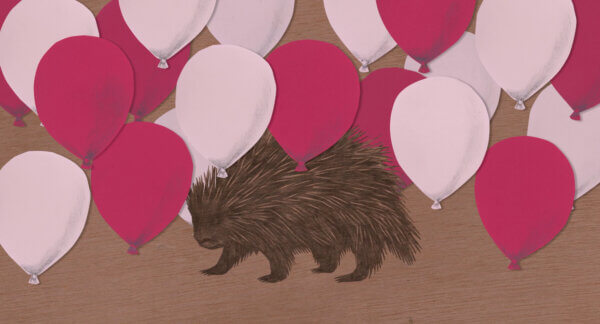
The Great Malaise (©2019 National Film Board of Canada)
The slow-build of the sound design contributes a lot to the film’s increasingly unsettled atmosphere. Can you tell us a bit about how you and the sound designer worked together to achieve this?
I chose Philippe Brault because we had worked together in the past. He composed the music for some short animations I did for a TV show, and I was so surprised by what he came up with. The sound effects he used with my images gave them new meaning. For example, instead of using a “bang” for a gun, he might use a harp sound. It added this amazing poetic dimension. When I started working on The Great Malaise, it became clear that I would want something similar. The story takes place in the narrator’s mind, and I felt that it was crucial for us to feel that disconnection from reality. Philippe immediately grasped what I wanted. There was a lot of trial and error, because the scenes go by so quickly that the slightest change influences the pace and understanding. We didn’t want to lose viewers by having too many different things going on simultaneously. We also had to keep the narration to a minimum to make more room for ambient sounds.
How did you come to work with the NFB on this project, and had you worked together before?
When my friend Pascal Blanchet told me he was making a film with the NFB (The Procession), I was envious and curious to see how it went. Since I’d wanted to make an animated film based on my books for a long time, he convinced me to submit my project. The NFB supported me from the very start of the writing process.
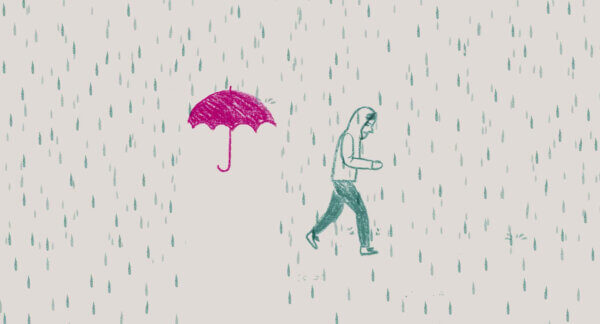
The Great Malaise (©2019 National Film Board of Canada)
What elements did the NFB bring to the film from a production/creative perspective, and what were some of your key relationships with members of their team?
The Great Malaise is my first film, so I have no way to compare. That said, working with them has been a delight; they make it easy for filmmakers to concentrate on creating. They gave me the technical support and human resources I needed to make the film I wanted to make. They encouraged me to take my time and experiment. I learned a lot, animated several scenes myself, and gave the more complicated scenes to Agathe Bray-Bourret, an excellent animator and by far the person who was most involved on the film. We spent nine months side by side in a little office, where she showed me a ton of tricks, so the project was a kind of mini animation school for me. My producer, Marc Bertrand, also gave me excellent advice. He often helped me improve the narrative thread and find the right structure, something I wasn’t necessarily expecting from a producer.
Would you say that this is a film about anxiety from a woman’s perspective – or personal perspective – or is it more universal?
An important question! In my view, it’s universal. It’s a societal problem. At first, I wanted to free myself from the narration to avoid giving the character a gender, but I wasn’t able to. On the other hand, the choice of title is not insignificant. The purpose behind putting it at the end of the film was to get some distance from the narrator and to see the problem from a more universal viewpoint. I also wanted to turn the mirror on the viewers themselves. You’ll note that in the images I chose, almost all the characters are male. It was a way to include men in the problem but also to illustrate the fact that we sometimes set unrealistic or unattainable goals for ourselves.
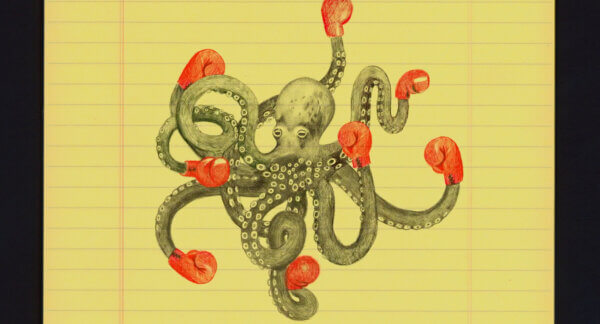
The Great Malaise (©2019 National Film Board of Canada)
I see more and more that animation is being used as an effective vehicle for communicating themes of anxiety and mental illness – why do you think the medium of animation works so well with this subject matter?
I think illustration and animation are suitable for illustrating abstract or intangible themes. Anxiety and depression happen inside the mind, and their signs are often invisible from the outside. I believe that images can help convey these problems better than words—images don’t need to pass through the intellect to be understood and felt. I also think we’re seeing cases of mental illness skyrocket nowadays, so it’s not surprising that the issue is becoming more and more prominent.
What are you working on now/next?
I’m working on a children’s book, once again about anxiety. I thought I was done with the subject, but I guess not! I’d also love to do another animated film. I learned so much with The Great Malaise, and I want to put that knowledge to use, see how far I can go with the medium, and have fun telling stories my own way. One thing is sure: I want to make a funny film. My projects have always had a sense of humour, and I want to explore that direction more.
See more of Catherine Lepage’s work at catherinelepage.com

